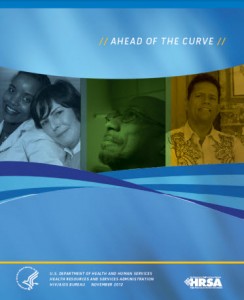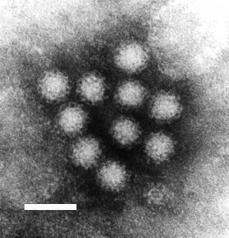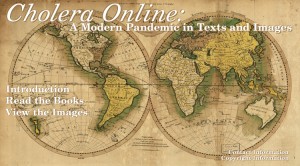The AOL education series, What Remains has released a new video (less than 5 minutes) on the National Hansen’s Disease Center Museum in Carville, Louisiana. The video was filmed in December 2013.
The Libraries partnered with the Hansens’ Disease Museum in 2011 to digitize the patient newsletter, the Star to make it more widely available to researchers.
Thanks to the School of Medicine Office of Student Technology, LSUHSC now has access to a new web-based clinical application designed to aid in visual diagnosis and patient education.
VisualDx?á allows point-of-care assistance for the user. The differential builder, diagnosis search, and medication search provide the information necessary to compare symptoms, visual cues, diagnosis, and treatment options. The VisualDx image bank contains over 25,000 medical images of diseases of the skin, hair, nails, eyes, lungs, etc. and shows variations by age, skin type, and stage.
You can watch a video overview of the application here:?áhttp://www.visualdx.com/features/video-overview.
Access to VisualDx is currently available through August 2014 for use on campus as well as off-campus for those with remote access privileges.?áSupported browsers are Internet Explorer 7+, Google Chrome, Firefox, and Safari. VisualDx also supports mobile wireless devices with a 3G or 4G connection.
Tags: Databases, Education-technology, mobile, Remote Access | Emergency Medicine, Family Medicine, Infectious Diseases, Library News, Medicine, Off-Campus Access, Pediatrics, Tools | Permalink | Comments Off on Introducing VisualDx: A New Tool for Clinicians | Posted Friday, November 15, 2013 by Phillips, Holland T.
The Centers for Disease Control have released?á2013 Vaccine Recommendations for adults. Changes include new recommendations for Pneumococcal Vaccine and Tdap/ Td Vaccines.?á There is also a simple quiz to help patients figure out what vaccines may be necessary. For more complete information, see the complete report, Advisory Committee on Immunization Practices (ACIP) Recommended Immunization Schedule for Adults Aged 19 Years and Older ÔÇö United States, 2013.

Ahead of the Curve
The Ryan White HIV/AIDS Program Progress Report
The LSUHSC HOP Clinic was featured as a case study in the Ryan White HIV/AIDS Program Progress Report 2012(pgs 32-40). The Report is issued by the US Department of Health and Human Services – Health Resources and Services Administration – HIV/AIDS Programs.?á The many services offered by the Clinic and several faculty members are highlighted.
The Centers for Disease Control offers a monthly Public Health Grand Rounds webcast.?á The Tuesday, September 18th broadcast (12-1 pm CDT) is entitled “Explaining the Unexplained: Discovering New Diseases Using Advanced Detection Tools.“?á It is possible to receive continuing education contact hours for participating.

During World War II, Theodore Geissel (better known as Dr. Seuss) joined the war effort doing what he did best, creating cartoons and educating. He was commissioned as a captain in the US Army. The Contagions blog discovered this image on the USDA Young Dipterists website and NPR picked the story up.?á This is the first page of a handbook for soldiers to help educate them on the prevention of malaria by avoiding mosquito bites…no partying with Ann for them!
Perhaps those of us in South Louisiana should be taking his advice 70 years later with West Nile outbreaks making the news.?á Of course the Centers for Disease Control have released a feature with some more modern advice.
 As the “locavore” movement continues to blossom across the country, it’s no longer only rural citizens who have access to less-industrialized food options: even residents of cities are finding ways to grow their own produce, or at least acquire it from nearby sources. This provides more economical and healthy options for cooks. A part of this movement has been the choice of some urban homesteaders to raise their own poultry.
As the “locavore” movement continues to blossom across the country, it’s no longer only rural citizens who have access to less-industrialized food options: even residents of cities are finding ways to grow their own produce, or at least acquire it from nearby sources. This provides more economical and healthy options for cooks. A part of this movement has been the choice of some urban homesteaders to raise their own poultry.
The Centers for Disease Control & Prevention (CDC) currently has a page on its website with helpful information about Keeping Backyard Poultry. The major point that the CDC addresses is the prevention of the spread of Salmonella, an illness that is transmitted in a variety of ways. It can be spread through contact with poultry (or any birds), including?áchickens, ducks, geese, and turkeys.
Salmonellosis is an infection with the bacteria called?áSalmonella.?áMost persons infected with?áSalmonella?ádevelop diarrhea, fever, and abdominal cramps 12 to 72 hours after infection. The illness usually lasts 4 to 7 days, and most persons recover without treatment. However, in some persons, the diarrhea may be so severe that the patient needs to be hospitalized. In these patients, the?áSalmonella?áinfection may spread from the intestines to the blood stream, and then to other body sites and can cause death unless the person is treated promptly with antibiotics.

The elderly, infants, and those with impaired immune systems are more likely to have a severe illness. The CDC highly recommends hand-washing and careful hygiene to anyone handling live poultry or poultry products such as meat or eggs. All poultry and poultry-related equipment and supplies should be considered contaminated even if the animals look healthy.
Interestingly enough, the?áTimes-Picayune?ápublished an article?álast year that examined troubles with feral chicken populations which have grown since Hurricane Katrina. Recently, local ABC affiliate WGNO-TV covered a story about the difficulties in catching feral chickens in the city. New Orleans has its own special set of issues when it comes to the cosmopolitan bird.

Photo Credit: F.P. Williams, U.S. EPA
Various local news agencies are reporting that the LSU baseball team was missing 16 players for their game last night due to stomach flu.
Coincidentally, the CDC is featuring Norovirus Surveillance on their webpage yesterday. We published a publication alert post in November about Norovirus in NBA players.
Surprisingly, just about every 20 seconds a child under age 5 succumbs to the disease pneumonia. ?áIn its 2nd year of existence, the Global Coalition against Child Pneumonia is raising awareness about the disease. It is preventable and there are effective and affordable options that help protect children. The symptoms include but are not limited to: cough, shaking chills, fever, fatigue, and muscle pain. Its symptoms often mimic those of the flu but when it doubt, get checked out.
?áFor more info, visit:
http://worldpneumoniaday.org/
A new study in the December 1st issue of Clinical Infectious Diseases exams the spread of the Norovirus among NBA players in the 2010-2011 season.
Let’s blame the Saints loss last Sunday to the Rams on a stomach bug and hope they’re better this week for their game against the Buccaneers.
Link to the pdf of the article is available to LSUHSC faculty, staff & students. It can be accessed off-campus with a valid LSUHSC library barcode & PIN. You can find more information at our remote access webpage.
The National Library of Medicine has released a very interesting addition to their History of Medicine collection: World War II-era public health films.
These films cover a wide range of public health issues pertinent to this era. Five animated films starring ÔÇ£Private SnafuÔÇØ inform on issues like Personal Cleanliness, Cleaning Mess Gear and Drinking Water. There are also non-animated films that once educated military personnel on yellow fever, malaria and the use of DDT which was believed would cure common diseases. Interested to learn what information was important for women at war? Don’t worry- there is a film on that as well.
Available films have minor defects and scratches but are definitely worth watching!
Since the Centers for Disease Control is often featured in popular movies and books about deadly outbreaks, their emergency preparedness blog has created a post for the most deadly of emergencies, the Zombie Apocalypse.
We’d like to think the CDC was partially inspired by the 2006 Zombrarian visit to our campus.

NLM exhibit
With the news that Cholera has taken over 100 lives in Haiti, a National Library of Medicine exhibit on the history of the disease came to mind.
Louisiana has had its own battle with the disease. As recently as 1986, cases of cholera were reported in South Louisiana, including Jefferson Parish. Not to mention the over 4,000 people who died of the disease in New Orleans in 1832.
October 19th was the 67th anniversary of the discovery of streptomycin which proved to be effective against tuberculosis and other penicillin resistant infectious diseases.
Flu shots will be offered to LSUHSC New Orleans faculty, staff and students during the first week of October, brought to you by the School of Nursing. This year the flu shot will be administered in one dose and will help protect you and others against H3N2, influenza B, and the H1N1 viruses.
Those who should avoid vaccinations are:
- Infants under 6 months of age
- People with egg allergies
- People who have had a severe reaction to a flu vaccine in the past
- People with a mild to severe illness
- People who have developed Guillain-Barre Syndrome within 6 weeks of getting the flu vaccine
What: Flu Shots
When: October 6th, 7th & 8th b/w 9am ÔÇô 2:30pm
Where: School of Nursing ÔÇô Room 5B12 (5th floor)
Cost: $15.00 for faculty & staff; payable to LSUHSC-NO by check or money order (Cost is free for students)

 myLSUHSC
myLSUHSC




